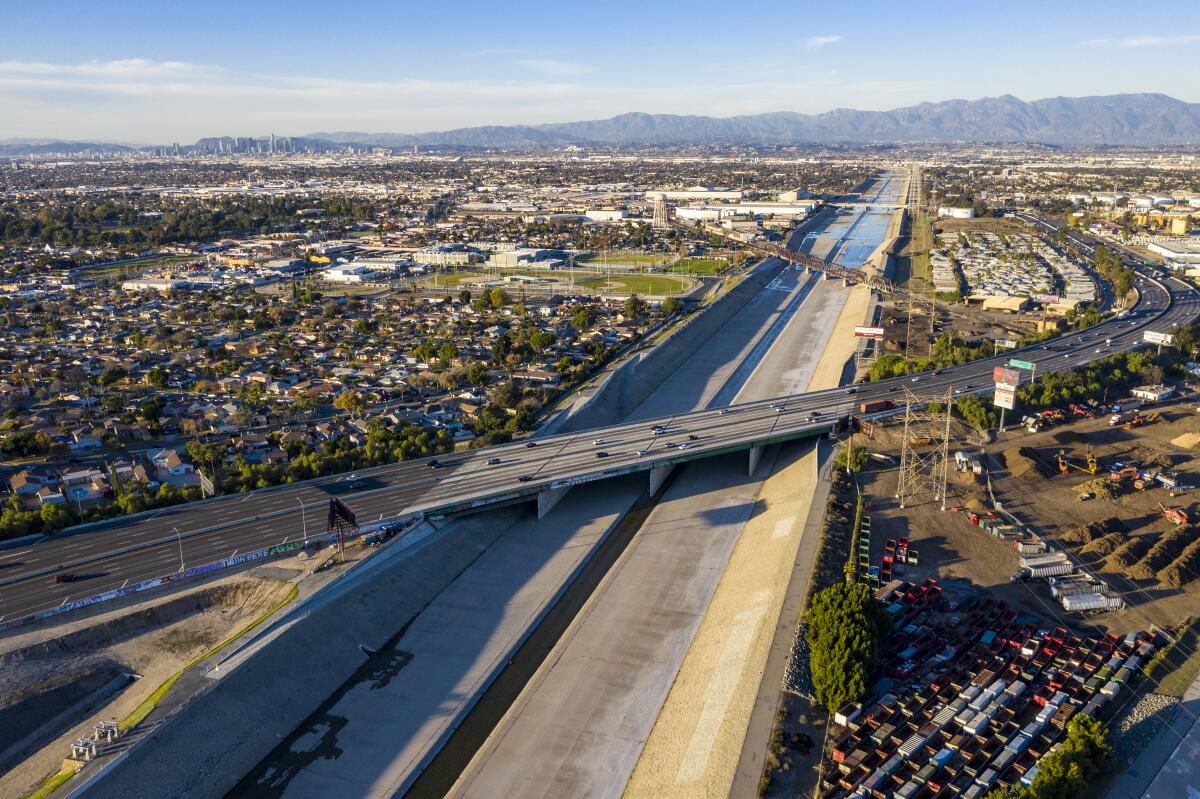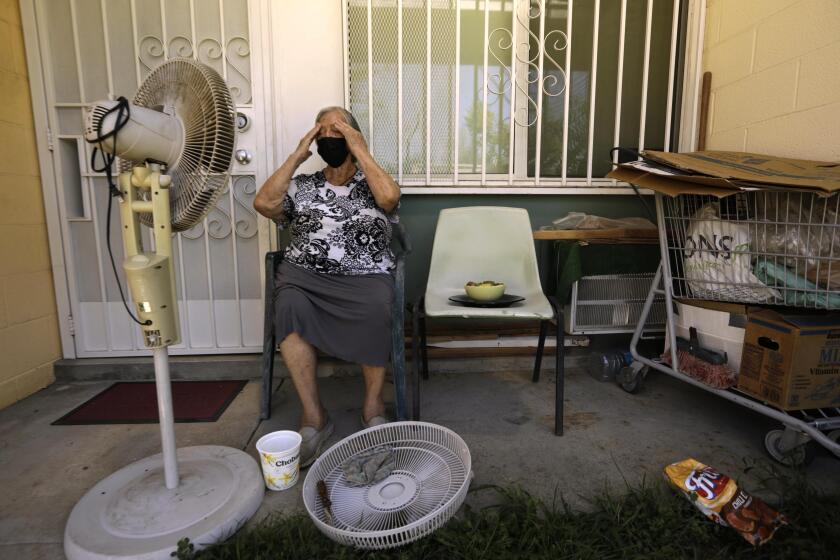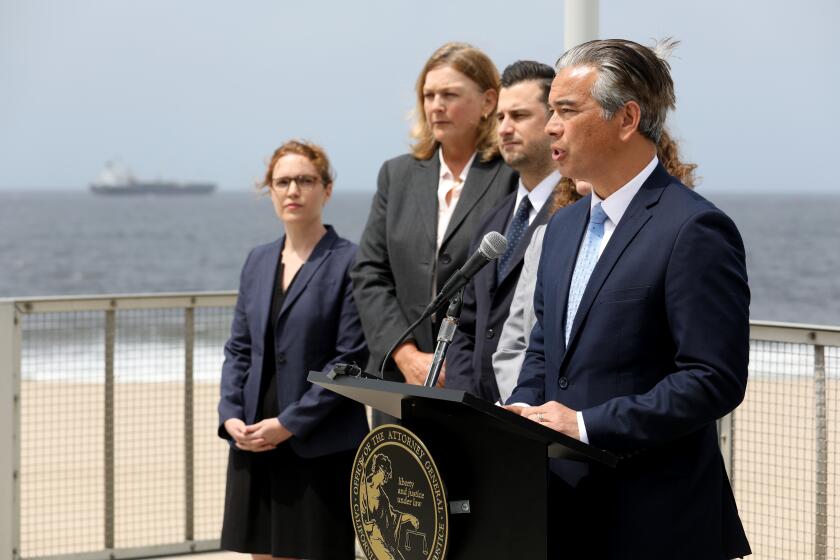Environmental groups allege L.A. River Master Plan was approved without proper review

- Share via
Two environmental groups have filed a lawsuit against Los Angeles County, accusing officials of violating state environmental laws when they approved the Los Angeles River Master Plan last month.
The lawsuit, filed in Los Angeles Superior Court on Wednesday, seeks to bar the county from developing any new river project without first conducting a review of “all foreseeable significant impacts to the environment that the master plan will authorize.”
The suit was filed by LA Waterkeeper and the Center for Biological Diversity.
“Litigation is never our first choice,” said Bruce Reznik, LA Waterkeeper’s executive director, “but the river master plan is clearly deficient, and we see this as a crucial moment in the life of the river.”
A coalition of environmental groups has withdrawn support for the Los Angeles River Master Plan, saying officials have ignored their feedback.
The master plan is intended to improve the appearance of the concrete-lined flood channel and, proponents say, improve water quality, increase wildlife habitat and address social inequities that have long plagued communities along the river. Among other changes, the project includes plans by famed architect Frank Gehry to build a cultural park at the confluence of the Los Angeles River and the Rio Hondo south of downtown.
The plan was given unanimous approval by the Los Angeles County Board of Supervisors on June 14.
However, Reznik said the plan “simply doesn’t have enough information for the public to understand how it will harm and benefit different areas.”
Prior to last month’s vote, the influential nonprofit groups withdrew support for the plan.
They are especially concerned about Gehry’s vision of “elevated platform parks” — massive, bridge-like green spaces that occupy government airspace high above the channel’s floor, and 4 feet above the rim of the channel walls.
A new UCLA mapping tool alerts Los Angeles County residents of extreme-heat danger in their neighborhoods.
Constructed on hulking concrete planks and enormous girders, the structures would stretch nearly a mile over both rivers and support a landscape of trees, grass, scenic ponds, horse trails, and walking paths.
Gehry and the master plan’s development team regard that proposal and others as a way of uplifting some of Southern California’s poorest, most densely populated communities — and atoning for racial and institutional injustices that have stymied their progress since World War II.
The river master plan also takes its cues from increased occurrences of extreme weather events due to climate change.
However, the plaintiffs, along with other nonprofit environmental groups including Friends of the Los Angeles River, East Yard Communities for Environmental Justice, Heal the Bay, and the Nature Conservancy, would prefer to see a plan that also explores proposals aimed at naturalizing the 51-mile-long river channel by removing concrete wherever possible.
County officials were not immediately available for comment. In an earlier interview, Mark Pestrella, director and chief engineer of the Los Angeles County Flood Control District, described the river master plan as “one of the most robust, progressive and community-driven planning efforts ever undertaken by L.A. County.”
“It addresses a wide range of priorities brought to us over three years of community engagement, including ecological disparities, homelessness, gentrification, and limited access to public open space and clean water,” he said.
Experts say U.S. Supreme Court ruling is not likely to unravel California’s ambitious climate goals to eliminate its carbon footprint by 2045.
County officials point out that the river master plan has no legal jurisdiction over land use, and no authority to implement its recommendations. Ultimate decisions about what happens along the lower river corridor will be made by the county and the 14 cities that border it, many of them impoverished, working-class enclaves.
The controversial platform park, they say, is a big-ticket project that could take a decade or more to build.
But the plaintiffs are concerned that the county may be taking steps to streamline development of the platform park without reviewing its environmental impacts, as required by the California Environmental Quality Act.
The lawsuit asserts that county officials are seeking “federal funding in the amount of $8.6 billion for L.A. River projects contemplated under the master plan,” including $2 billion for development of projects.
In the meantime, there are no visible signs that large-scale improvements of any kind will occur anytime soon along the river.










